I did a thing I set out to do roughly 20 weeks ago and it worked and I feel like a super star.
I went from never having ran a race before in my life to running my first half marathon at 26 years old in just 20 weeks.
And this gigantic post is going to outline exactly how I did it!
We’re diving deep into this process, so if this isn’t your cuppa tea, I get it. More food is coming next week and YUM. You’re going to be so excited.
But if you are interested in running, hi! I’m excited to talk to you about this today because it has taken up a lot of my time recently. We’ll talk about:
And ps. those links up there are clickable so you can hop around to the section(s) you’re most interested in.
And if you’ve ever trained for a race, I’d love to hear about how you did it, how it went, etc. in the comments! I’m kinda getting the feeling that everyone’s training is different, so I’d love to hear how you kicked butt.
Some links used in this post are affiliate links, which means if you order a product through the link, Fooduzzi makes some money (at no cost to you). All money is put directly back into making delicious plant-based yum here on the blog!
The Training
I actually found my training schedule before I found the race. Weird, right?
I think I honestly typed, “half marathon training schedule for beginners,” and this one was one of the first ones that showed up.
It gave me 20 weeks from start to finish, so I found a race that was roughly 20 weeks from the time I wanted to start, and boom. Done.
Honestly? It was a great training schedule. My goal was to get to the finish line, and that’s exactly what this training was designed to do. You’re not focusing on speed or intervals or anything else other than the number of miles you need to run three times a week.
I loved it, and I stuck to it to a T for the most part. There was a week I skipped because I was sick, but then I re-did that week, and then near the end I skipped a few of the longer runs (no 11 or 12 mile runs for me!) because of vacation and summer fun.
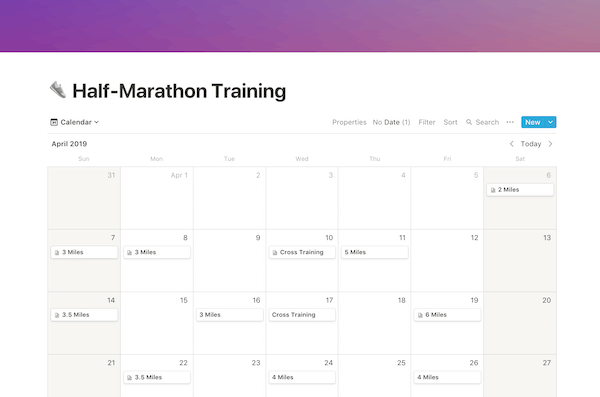
Having this structure really helped me set expectations for the week and allowed me to plan the rest of my week around my training. It also managed to keep me accountable, which was crucial for a non-runner like me.
Speaking of accountability, I did some runs with some friends (mostly my BFF Gretchen who’s already a runner), and it was so so helpful. Not only was it great just having someone to talk to while I was running for an hour and a half, but it was awesome to have someone’s brain to pick who has actually done a race before.
I cannot tell you how many times I texted Gretchen when I was sore in weird places or needed recommendations for how to run with my phone and car keys without having to hold them the whole time.
I’m so thankful to have had a running buddy like her, and if you have one, see if you can train together. It makes a world of difference
As for surprises during my training: one obvious thing I didn’t realize before I started was how much time I’d need to spend running per week.
I’m not a fast runner, nor was I training to be fast in my race; I only wanted to finish.
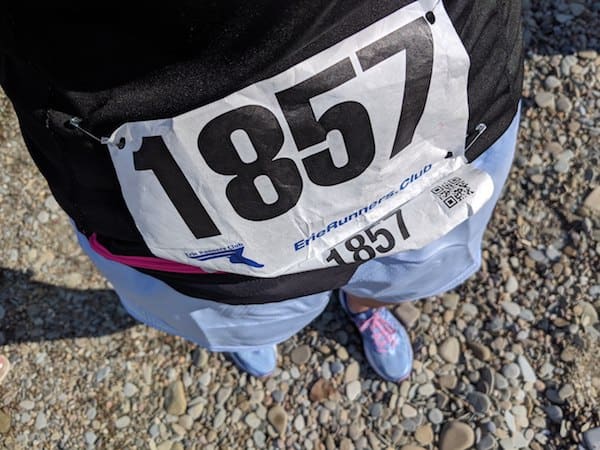
During training, I tried to keep to a 10-11 minute mile, and when you’re running 8, 9, 10 of these miles at a time…you’re moving for a really long time.
It’s honestly like a part-time job near the end, and for some reason, I never really thought through how much time I’d be spending running three times a week.
Luckily, I work from home and near a nice park, so I was able to hit most of my runs without a ton of rearranging my schedule.
I also was sore a lot. I had a lot of ankle and IT-band pain during most of my training. I foam rolled, I iced, I heated, and sometimes that all worked. Sometimes it didn’t.
If it didn’t, I took some time to recoup I was stubborn and worked through the pain.
In actuality, it would have made sense to listen to my body and take a break. I risked injuring myself even more by continuing to run when I wasn’t feeling my best.
I was just so worried about losing momentum and falling behind on my training, so I only took a break if the pain was really bad.
Granted, if you’re training for your first race having never ran before in your life, you’re going to be sore. But it’s good to try and evaluate whether that pain is normal or something that requires a rest day or two.
I also did a bit of “cross-training.” I put that in quotes because it was just the workout classes I had been going to with Classpass before starting training. Mostly HIIT and yoga.
The Food
This is a food blog after all. And you need fuel for your runs!
My advice? Find what works for your body by running around the same time as the race is.
My race was in the morning (it started at 6:45am), so I made sure to do a few morning runs to see what my stomach could handle.
I tried just coffee, I tried fruit, I tried bars, I tried ice cream. Some didn’t work, some did.
When it didn’t, it really didn’t; not going to go into details here, but runner tummy troubles are the real deal, folks.
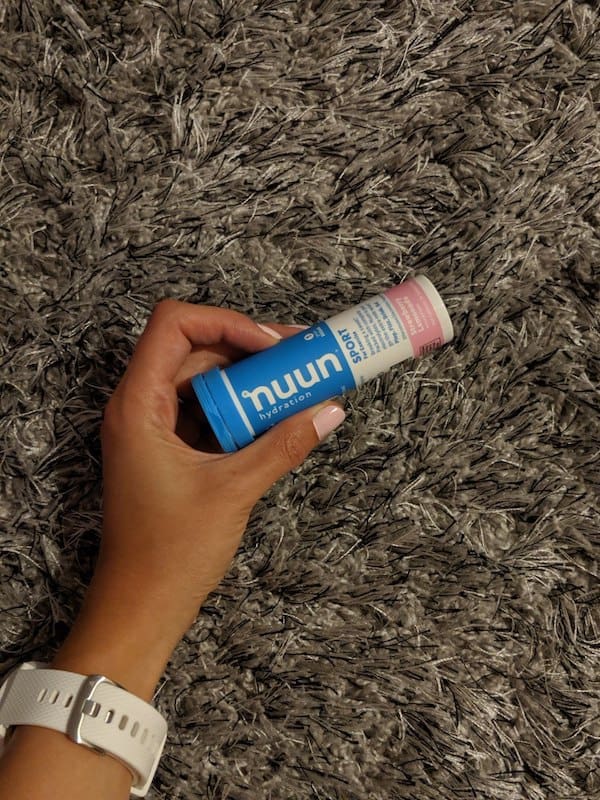
When it did, it gave me the energy to finish my run. Since that was the goal – to finish -, that was good enough for me.
The night before the race, we went to a brewery and I got some tofu tacos, a beer, and some soft pretzels. Carbo-loading at its finest.
On race day, I fueled my run with one of the new LÄRABAR Protein Bars (the peanut butter one is my fave!!), water, and some coffee with almond milk. Then I brought some of these Honey Stinger Energy Chews (not vegan because of the honey, but vegetarian and surprisingly yummy) to munch on if I was low on energy during the run. Which I was. And they helped!
One other very obvious thing that I did not take seriously is the amount of water I’d need to drink. Man.
I’m not a great water drinker, but when I started training while it was 95 degrees F outside, I needed to become a water fiend. Munching on ice and seltzer really helped! Plus, I got some Nuun to help me with electrolytes before/after long runs.
The Gear
I talked about this a lil bit in my Lately post, but here’s a recap of some of the gear that I relied on when training:
- Two different pairs of Saucony shoes (these and these) – I hadn’t bought running shoes since high school, so I got two pairs.
- SPIbelt – Basically a glorified fanny pack, aka. the solution to not having to hold my phone/keys/etc. on my runs.
- Spotify – For listening to podcasts during my solo runs. Ologies, Stuff You Should Know, and Armchair Expert were my faves.
- Fitbit Flex 2 – I used this for most of my training, and it worked alright. That said, it was tough to pause if I needed a break, it didn’t have a screen so it was difficult to know how fast I was going or how long I had been running, and once it glitched out and didn’t record my run so…
- Garmin Vivoactive 3 – I upgraded. Not only do I love the look of this watch, it tells me everything I’d ever want to know about my workouts and more. I got it only when I realized I liked running and would continue it after my training. And it can track my runs and send it to Mark so he can keep an eye on me and make sure I don’t get lost. And it’s a smartwatch and really cool.
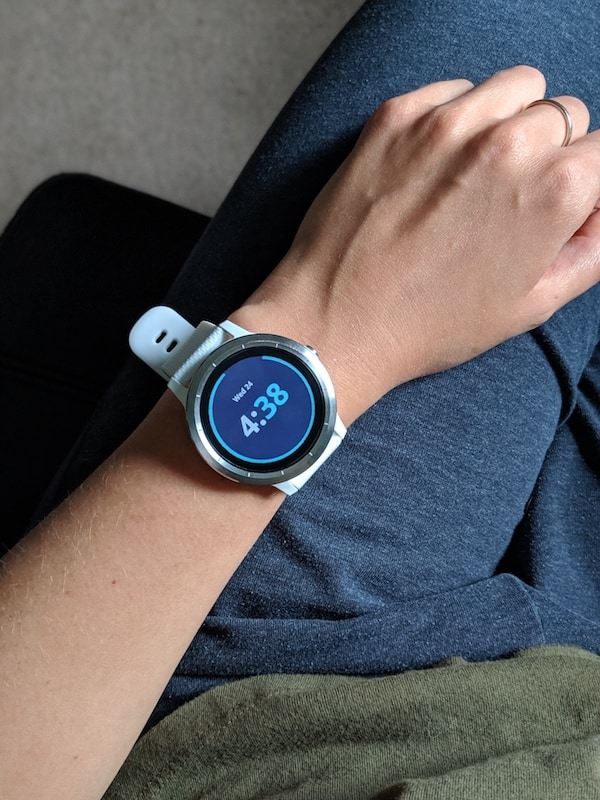
Totally not saying you need all of this to run. This is what made it easier, and frankly more fun, for me to run.
And more fun = more likely to stick with it (in my experience).
The Race
I chose to register for the Presque Isle Half Marathon in Erie, PA. Mostly because it was the closest race to me 20 weeks from the starting date of my training. I wish I was kidding.
Fortunately, I learned there were lots of other reasons that made this race awesome for a beginner:
- It was almost all flat
- It was mostly shaded
- The price to register was super low
- It’s on Lake Erie, which tends to make it breezy
Unfortunately, the race happened to be on the weekend when this area of the country was experiencing a heat wave with insane humidity.
But because of technology, we were aware of the race temps ahead of time and prepped accordingly by drinking water and wearing cool clothing.
Gretchen and Mark’s runner cousin Emily also ran the race; Gretchen decided to stick with me, the newb, and Emily ran by herself because she was qualifying for another run in a few weeks.
I hadn’t slept well the night before, but I was still wired. Equal parts excited and nervous.
And when the race started, it was just like another training run with Gretchen.
She was clutch at the beginning of the race especially because she kept an eye on our speed and made sure we didn’t go too fast right off the bat. This was huge because I felt really good at the beginning of the race so I wanted to go fast.
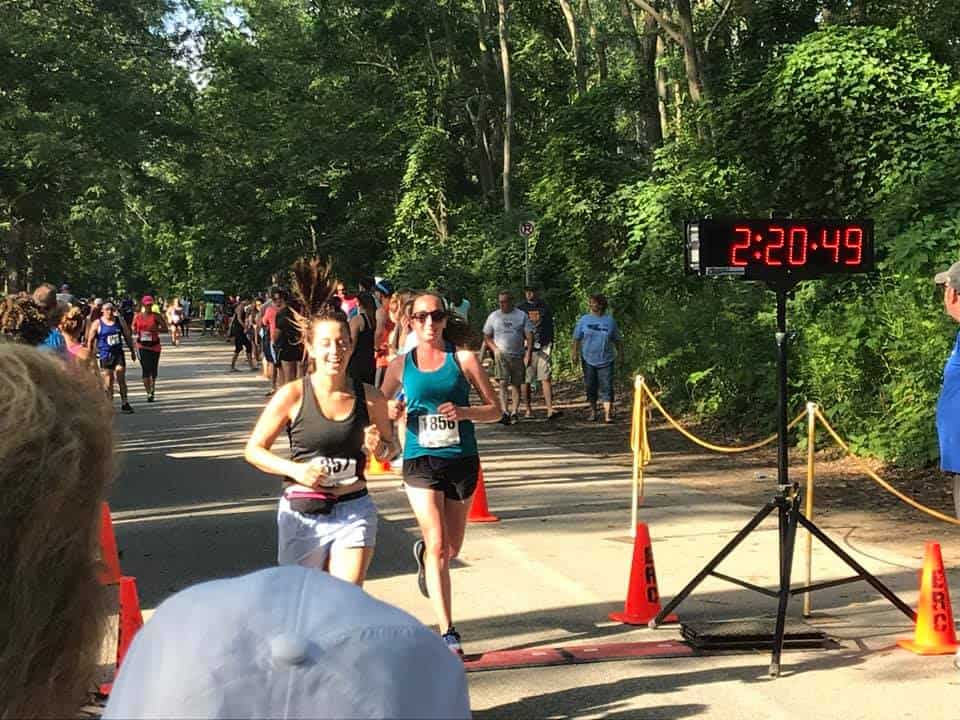
Had I gone fast however, I would have totally lost momentum near the end of the race.
She also encouraged me to stop at every water stop. It was super humid, and it was a great way to break up our runs. And once I realized that I can’t run and drink water at the same time, we walked through each water stop, drank our water, and then kept on running.
Another helpful thing we did near the end of the race when I was losing steam was to take the first part of the mile slow and then sped up as we neared the end of the mile. The race had clear mile markers on the side of the road so it was easy to break up each mile like this.
The actual race was honestly so much fun. Gretchen kept saying to look at it like a celebration of completing the training, and that’s honestly what it felt like.
I had been putting in so much time and energy into training, so it felt so so good to “show off” that time and effort in the race.
I just kept saying, “I can’t believe I’m doing this.” I’ve never been a runner, and it just struck me so many times throughout the race how crazy it was that I literally went from not being able to run a full mile to running 13.1 miles. I’m grinning right now thinking of that feeling. Nothing beats it.
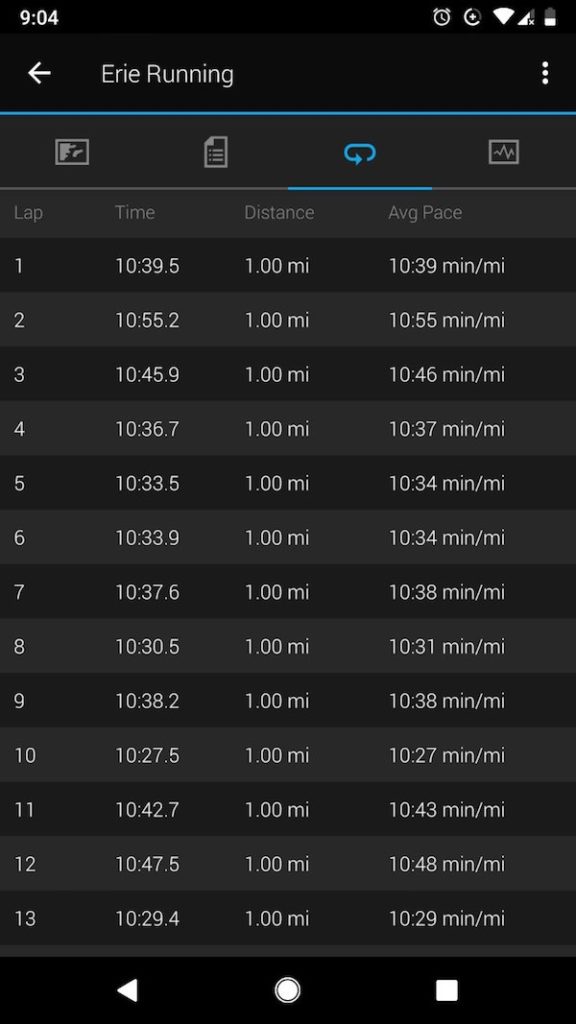
My official time was 2:20:47. More importantly: I finished.
The next time I train for a race, I’ll focus more on the time, but the fact that I have these pictures right here is way more important to me than the number the clock said when I passed it.
After the race, we hung out for a bit, drank lots of water, ate some watermelon, and then went to another brewery to celebrate. Beer will never taste as good as it did after that race.
I was also exhausted, so once we drove home, I took a long nap on the couch and foam rolled a bit to help relax my muscles. I also put a heating pad on my knee/IT band, which had been the “problem child” throughout my entire training.
One thing I want to say for any first-time runners: you can get blisters in so many places. And you probably won’t feel them until you hop in the shower. Ow. And why is chaffing a thing? WHY.
Other than those unpleasantries, I’m feeling great! Most of the soreness was gone by Tuesday, just two days after the race.
The Advice
Don’t go into running by saying, “I wanna run!”
Well, you can. But that doesn’t work for me. I need to have a specific goal in mind, or I’m never going to do it.
Had I just said, “Yeah! I’m going to start running!” I’m 99.9% sure I wouldn’t still be running today. Nor would I have created any kind of schedule for myself, especially because it was my first time.
The training schedule, the looming race date, and my friends all kept me accountable. I had an end goal, a way to get to said end-goal, and friends to say, “Wake up at 7:30am on a Sunday for an 8 mile run with me.”
That happened. Looking at you, Gretchen.
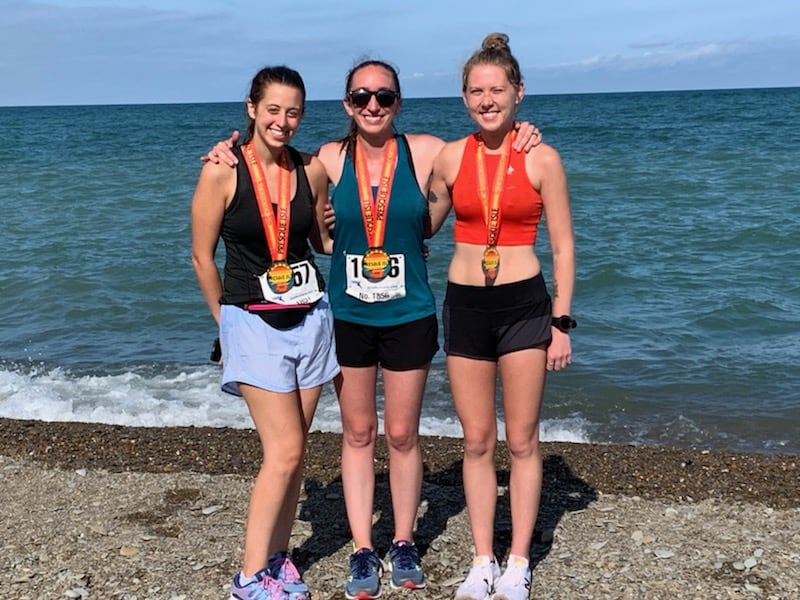
I also want to encourage you to reevaluate what it means to have a “good run” or a “bad run.”
Maybe it’s just me, but I thought that it was automatically a “bad run” if I stopped to walk or stopped for a water break. And it took me a really long time to shift my thinking on that.
When you’re running, especially in the summer, it’s totally unreasonable to think that you can run 10 miles without stopping for water. That’s just silly. And in fact, Gretchen and I stopped at every single water stop during the race. Fuel your body and drink that water.
And if your body is telling you to chill and walk for a bit, do it. Catch your breath, stretch your legs, and get back into it. It’s okay to not run the entire time if your body needs a break.
One more piece of advice: running kind of sucks. But it’s also amazing.
There were so many times where I would audibly yell, “UGH THIS SUCKS” during my runs. But there were just as many times where I’d finish a run, smile, and say, “That wasn’t so bad.”
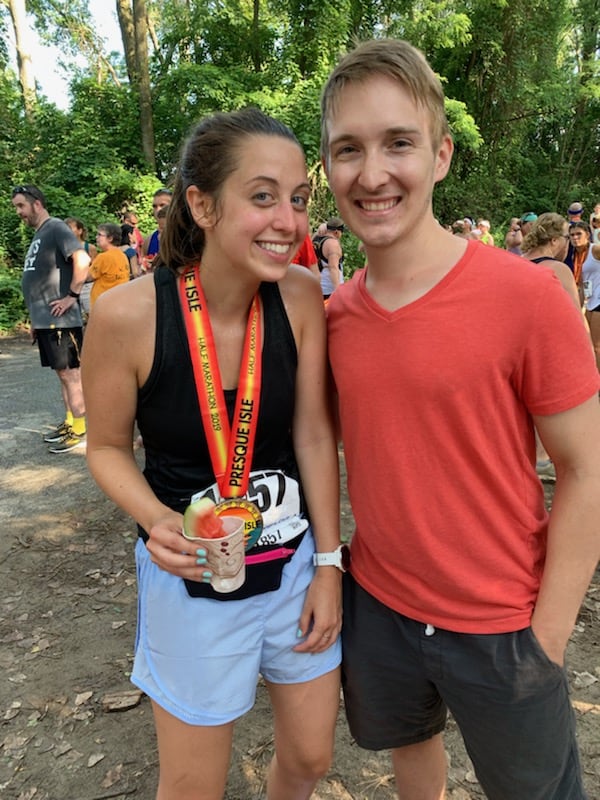
I’m 100% going to continue training for races (after this week because ya girl needs a break) and running. This has been such an incredible experience for me, and I’m just so thankful I did it.
I ran a freaking half marathon, you guys. That’s pretty dang cool.
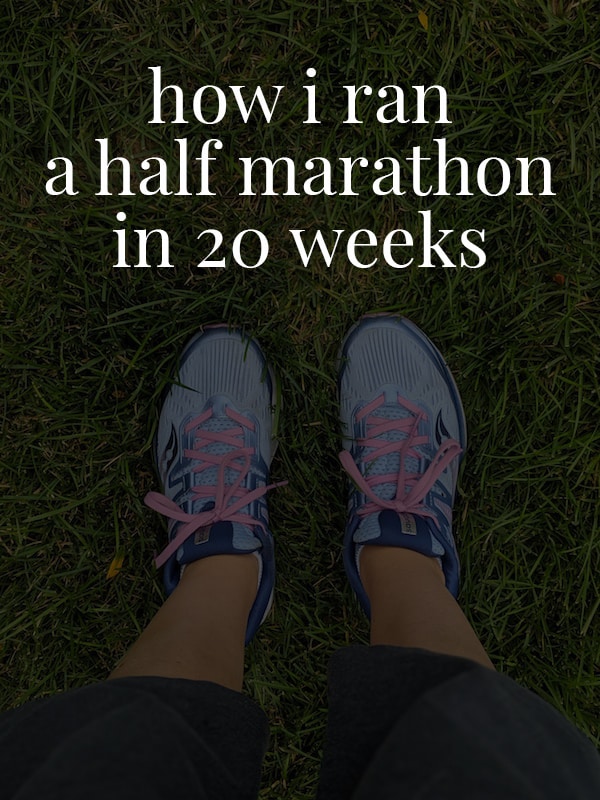

I’m so proud of you for surviving training (especially running 90% of your runs alone..amazing) and for not giving up during the race! It was such a humid run and you never once complained or wanted to quit. You are a ROCKSTAR. Way to go Alexa! Now let’s sign up for more races :)
Awesome post! I loved reading how you accomplished it, and I think your time was pretty impressive taking the weather into account.
Thank you!!
Congrats on completing your half marathon! Your journey over those 20 weeks is truly inspiring. I loved how you balanced training with nutrition tips—definitely giving me motivation to start my own training plan. Any advice for a beginner like me?